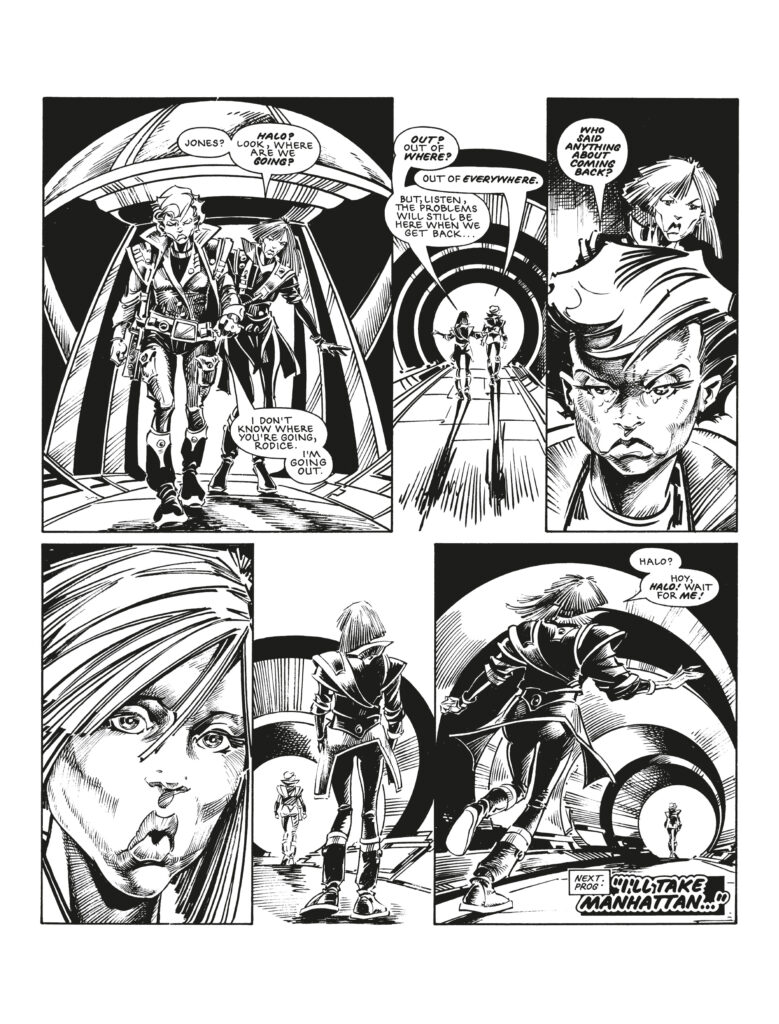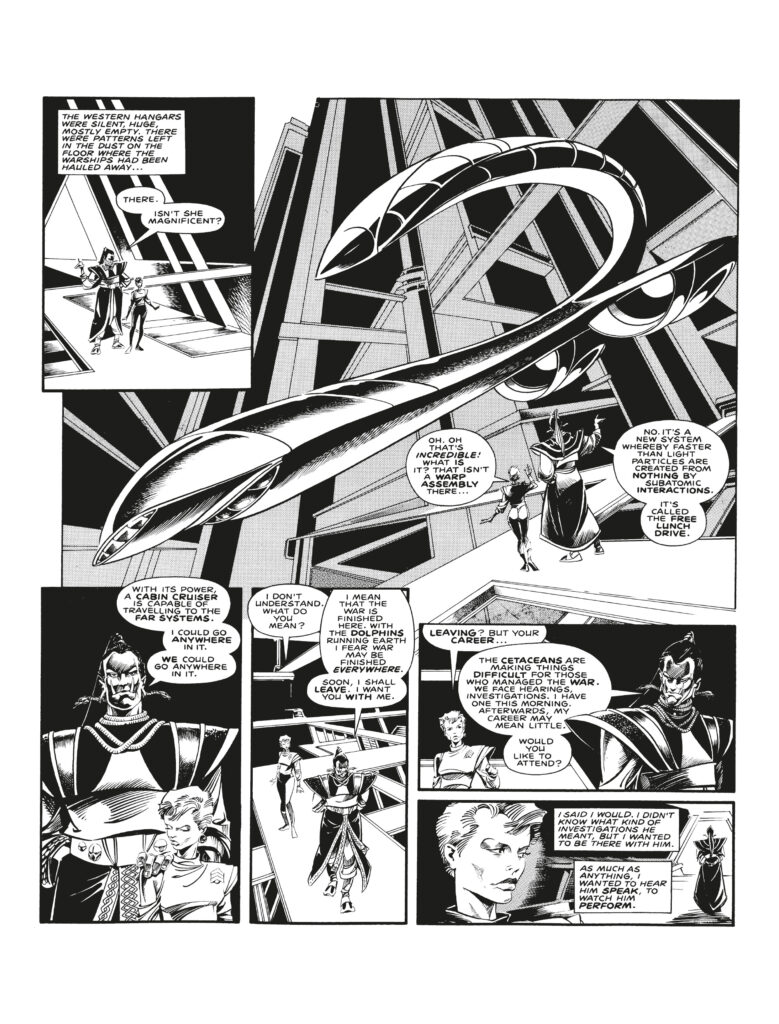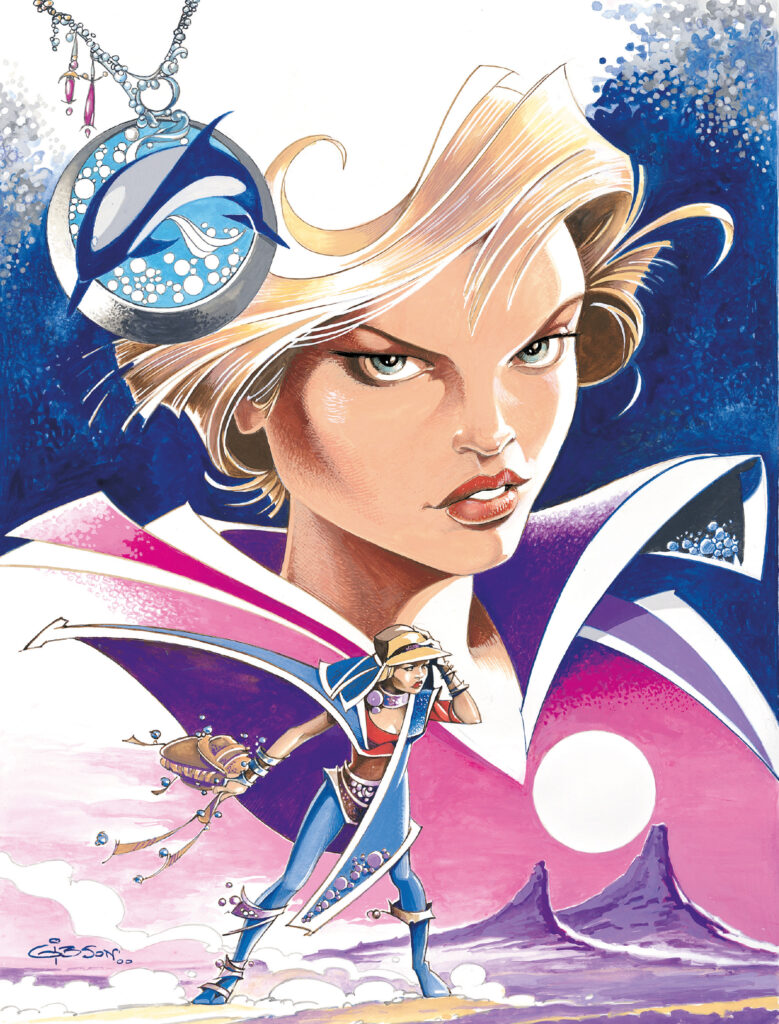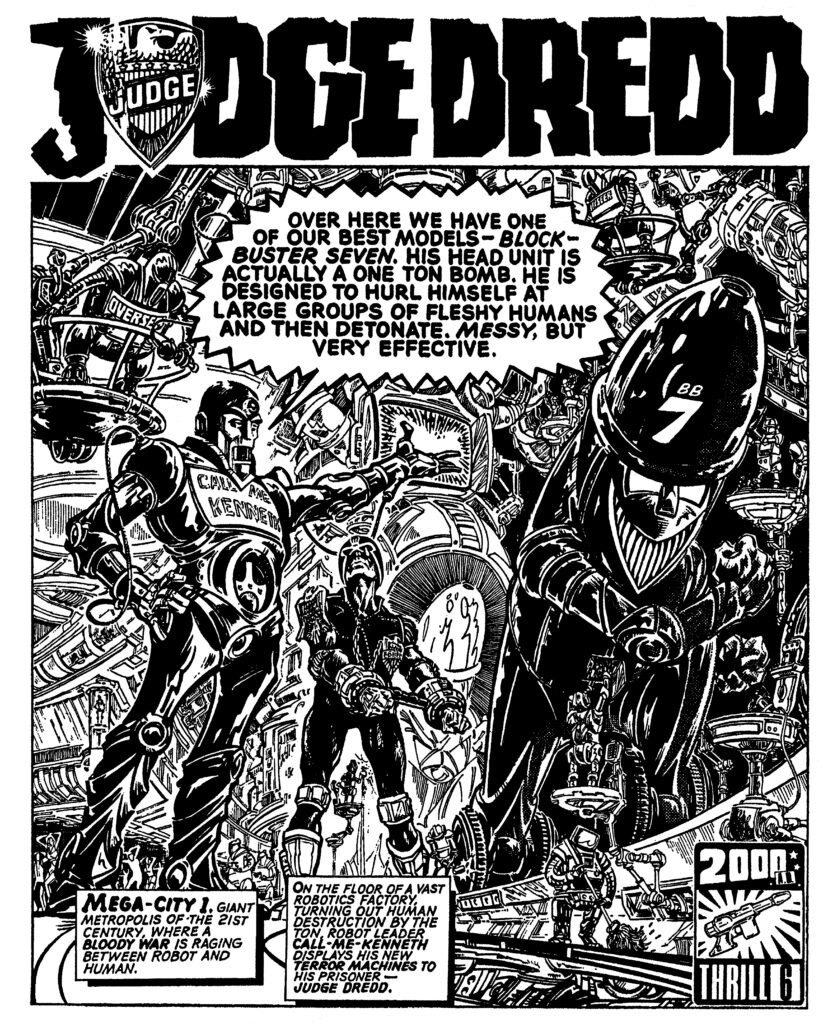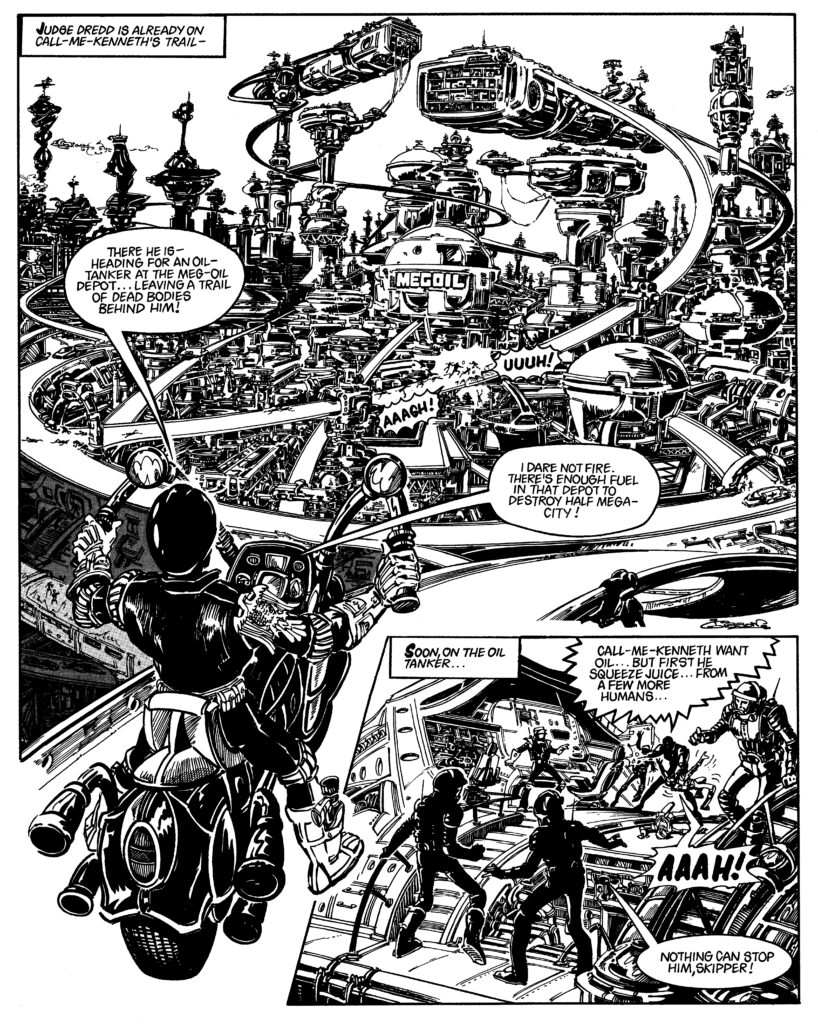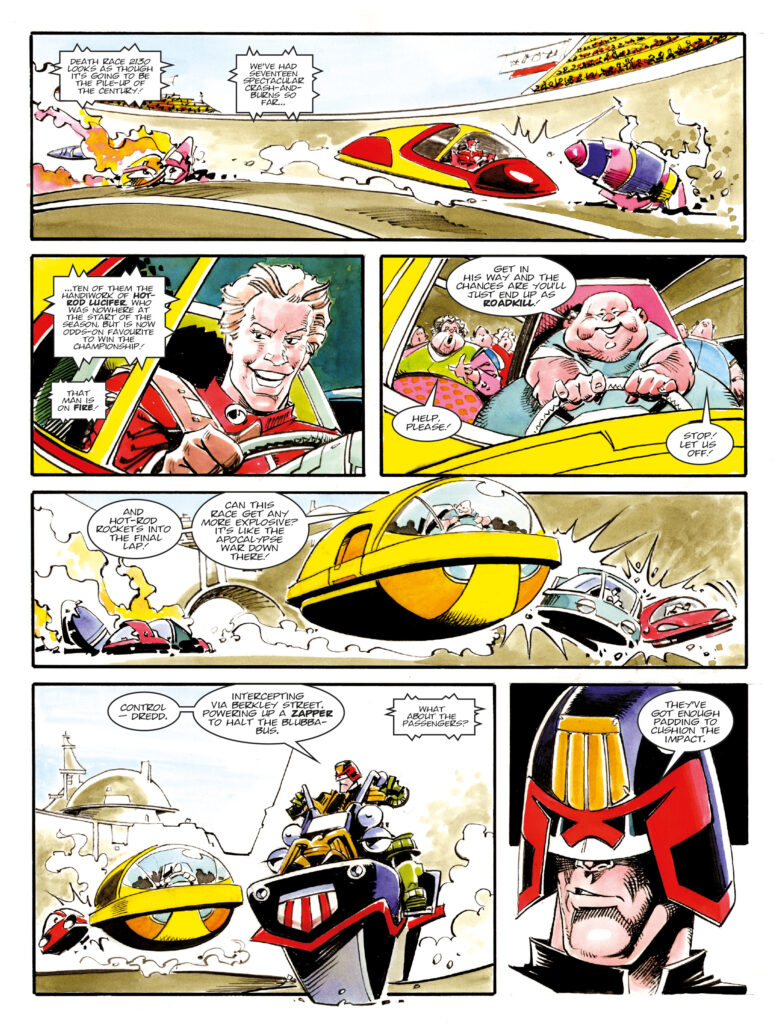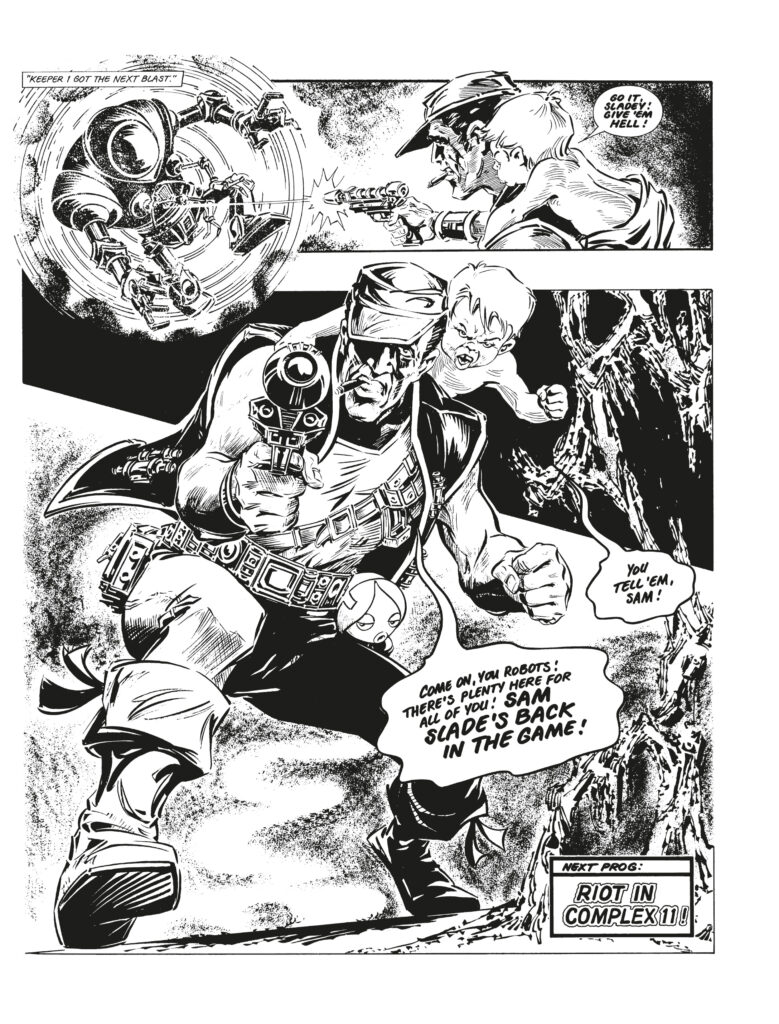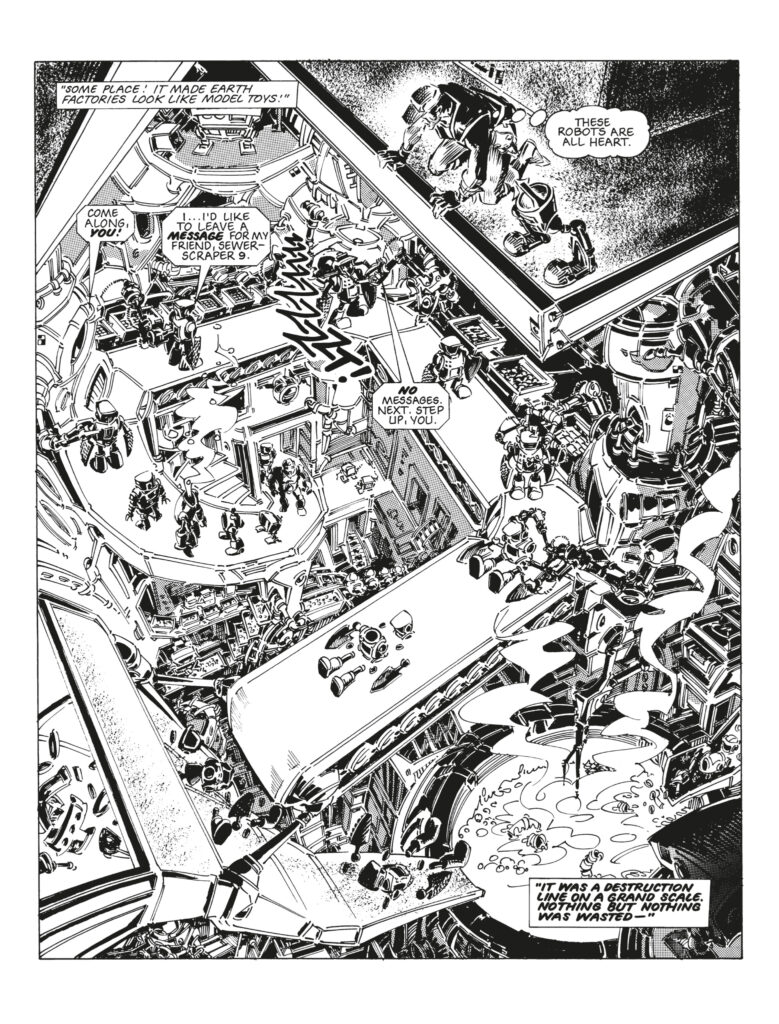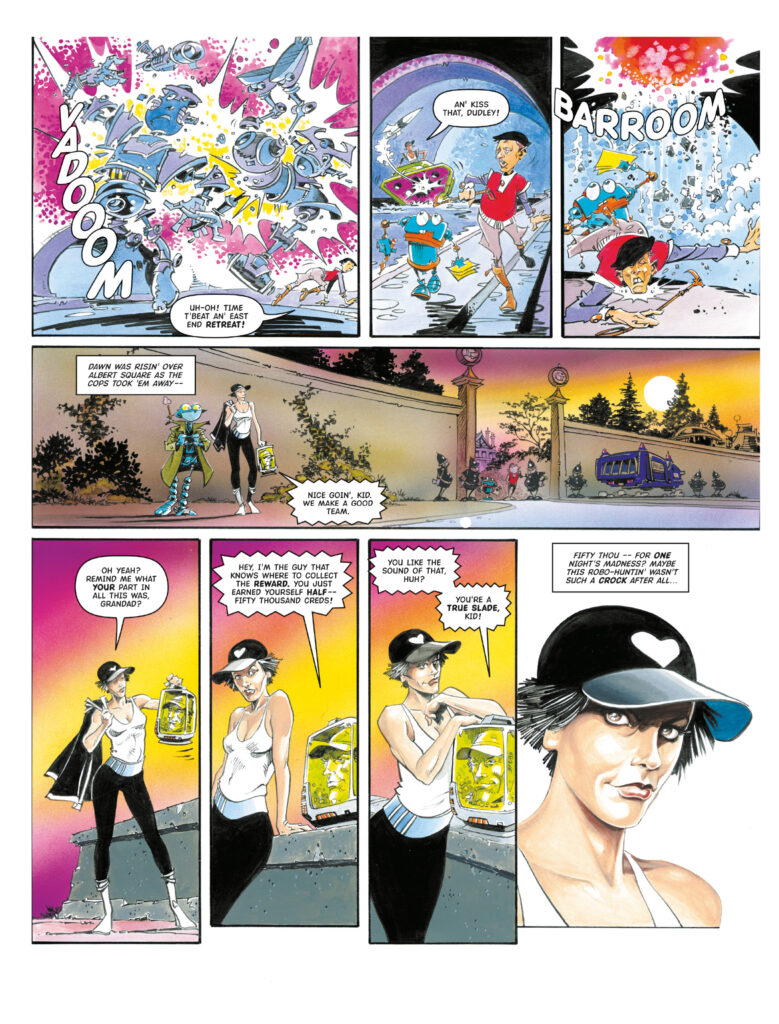Ian Gibson 1946 – 2023
11th December 2023
Everyone at Rebellion is deeply saddened to hear of the death of artist Ian Gibson.
A renowned writer and artist, with a career spanning half a century, he was responsible for the art on some of 2000 AD’s most distinctive and iconic stories, including ‘The Ballad of Halo Jones’ with Alan Moore and ‘Robo-Hunter’ with John Wagner and Alan Grant.
Whether under his pen-names – Emberton and Q. Twerk – or his own, Gibson’s art is immediately recognisable: as at ease in portraying dynamic action as it is chronicling character, as comfortable with goofball comedy as with moving pathos. His endlessly inventive imagination could craft whole worlds that seemed lived-in and real yet fantastical and wondrous – from the mean streets of Mega-City One and the robot world of Verdus to the planets on Halo Jones’ galaxy-spanning journey.
Born in 1946, Ian’s first work was on fanzines but by 1973 his art was appearing in Pocket Chiller Library, the Bionic Woman Annual, and in House of Hammer titles. After his ‘skinny’ girls were rejected by editors on IPC’s range of girls’ comics, he worked with renowned Spanish artist Blas Gallego, who lived in London at the time, with Gallego inking over Gibson’s pencils. It was his work on ‘Death Wish’ in 1975 for Valiant that marked the beginning of a decades-long collaboration with writer and editor John Wagner.
After 2000 AD launched in 1977, Gibson contributed a string of work drawing the futuristic lawman, including episodes for the first Judge Dredd epic, ’Robot Wars’. It was his portrayal of robots inspiring Wagner to come up with a new series that would suit his talents – ‘Robo-Hunter’.
When the long-running series about a weary, wise-cracking bounty hunter called Sam Slade tracking down errant robots began, its first episode was by Spanish artist José Ferrer – but Gibson soon stamped his authority on the character, catapulting him into the pantheon of 2000 AD greats.
‘Verdus’, which saw Sam and spaceship pilot Kidd (who had been reverse-aged into a foul-mouthed baby) attempt to escape a planet populated entirely by robots, is one of the most inventive stories 2000 AD has ever published. Gibson brought an anarchic and constantly surprising approach to storytelling on the series, as brilliant at handling the high-stakes action sequences as he was at injecting humour, bringing charm to the laconic lead character and introducing a host of memorable supporting characters who caused chaos and kept readers riveted to each new story.
In 1981, Gibson worked with rising star Alan Moore on the Tharg’s Future Shock story ‘Grawks Bearing Gifts’ and the pair would reunite a few years later for one of the landmark stories in 2000 AD history: ‘The Ballad of Halo Jones’.
A powerfully feminist and forward-thinking serial about a young woman desperate to escape the claustrophobic and dangerous life on a floating housing estate, Gibson and Moore worked together closely to construct a futuristic and yet relatable world. As Halo left Earth and faced betrayal, danger, and heartbreak, Gibson’s skill only grew in portraying her evolution from a wide-eyed innocent to a scarred but mature woman. His clear passion was the vital ingredient for the success of both the character and her story, told by the duo across three books. Halo Jones is rightly considered to be a classic story in comics history: one which continues to influence and inspire new creators to this day.
With his 2000 AD catalogue including runs with stories including ‘Ace Trucking Co’, ‘Anderson: Psi Division’ and many more, in the late 1980s Gibson moved across to work in America, with a storied career working on comics including Mister Miracle, Star Wars, the major DC comics event storyline ‘Millennium’, and ‘Meta 4’ for First Comics. In the 1990s, he designed pre-production visuals and characters for the pioneering CGI-animated TV series, ReBoot, as well as creating ‘The Chronicles of Genghis Grimtoad’.
Ian’s most recent 2000 AD work saw him return to both Judge Dredd and one of the franchises he’d made famous, ‘Robo-Hunter’, teaming up with Alan Grant for a series based around the adventures of Sam Slade’s daughter, Samantha. In recent years, he celebrated the publication of his long-gestating Lifeboat story, as well as connecting with fans on social media.
Throughout, Gibson never lost his ability to make the fantastical into something which felt relatable, exciting and real; his gift for humour marks him as one of 2000 AD’s most expressive and human artists, who left an indelible mark on comics history.
His passing represents another profound loss from the golden generation of artists and writers who established 2000 AD as an artistic and cultural powerhouse, his work enthralling and thrilling generations of children.
Our most heartfelt condolences go out to all of Ian’s family and friends.
